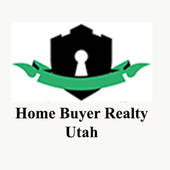Highland Utah Homes for Sale and Private Mortgage Insurance
Private Mortgage Insurance is used by Highland Utah Home Loan Buyers to insure the lender against default if the borrower has less than 20 percent down. Private Mortgage Insurance can be a very costly insurance premium that is necessary as part of loan qualifications set by Fannie Mae and most secondary market investors. With the right loan, it doesn’t have to be an obstacle.
How much does Private Mortgage Insurance Cost?
PMI increases your monthly payment and could be tax deductible. PMI varies, but can be estimated by taking about one-half percent of the total loan amount. With a home selling for $300,000 and 10 percent down or $30,000, the annual cost of PMI on your $270,000 loan would be approximately $1,350 annually or an extra $112.50 monthly on your home payment. PMI will go away once you go below the 80 percent of Home Value. There are some programs available that can help you avoid paying PMI, make sure check with your Mortgage Broker to find out all the programs that you qualify for.
Highland Utah Homes for Sale Private Mortgage Insurance and the early exit!
Private Mortgage Insurance (PMI) is the safety net of the lender. PMI benefits lenders because it guarantees payment on the balance of loans not covered by the sale of foreclosed properties.
If a borrower makes a down payment of 20% of the cost of the home, the lender can generally trust that he will make his mortgage payments faithfully to protect a large investment. In this case, the lender comes out ahead if the borrower is forced to foreclose on his house, because the lender loans 80% of the cost of the house, but will probably recover 100% of the cost of the house. But, if the borrower makes a smaller down-payment, such as 3%, 5% or 10%, and borrows the rest, and then defaults on his loan, the lender loses money.
If a house is purchased with a conventional mortgage and a down payment of less than 20 percent, PMI is almost always a requirement. The insurance benefits the lender, but the borrower pays for it. An initial premium is included in the closing costs, and a monthly amount in the house payment.
The PMI cost varies depending upon the size of the mortgage and the percentage of the down payment. If the down payment is more than 15 percent but less than 20 percent, the borrower will generally pay about 0.32 percent of the loan amount annually in PMI premiums. That totals about $40 a month for a $150,000 mortgage.
But PMI is not fool-proof. Homeowners can sometimes eliminate private mortgage insurance by refinancing their loans -- even if they continue to owe more than 80 percent of the value of the house. And there are new laws that require lenders to remove PMI if a mortgage does not exceed 80% of the value of a home. But, this new law only applies to loans recorded after July 29, 1999. If a borrower has a loan that was recorded before July 29, 1999 and thinks he might like to cancel the mortgage insurance after a few years, he could, depending on the conditions and whether the insurer allows cancellation.
The most common method used to avoid paying private mortgage insurance is for a borrower to get a "piggyback loan" - a second mortgage that allows him to make a 20 percent down payment. For example, a borrower can pay 10 percent down; get a first mortgage of 80 percent, and a second mortgage of 10 percent. The piggyback loan is always at a higher rate. The borrower is not paying for PMI, but is still making a monthly payment, probably for roughly the same amount as PMI. A piggyback loan also has an income tax advantage because it allows the borrower to deduct the interest from his taxable income. However, he can’t deduct the cost of PMI.
For homeowners who owe between 80 and 83 percent of the house’s value, the best way to avoid PMI when refinancing the loan is to find a lender that won’t immediately sell the mortgage on the secondary market. Generally, to eliminate PMI, a homeowner must have a spotless mortgage payment history and be able to fit a certain profile of borrower. Examples of good candidates include:
· A homeowner who is refinancing a mortgage and has had no late payments in the last year or two.
· Someone who is barely over the 80-percent PMI threshold. (For example, if he owes $85,000 on a $100,000 house, he probably won’t get a break on PMI, but someone who owes $82,000 might.)
· A homeowner who is otherwise creditworthy -- has a high credit score, a stable job, and a good ratio of income to debt.
Even with these credentials, the homeowner must try hard to find a lender that keeps mortgage loans on its books and is willing to take the risk. Most mortgage lenders don’t hold loans for long. They bundle mortgages together and sell them to large investors such as big banks, insurance companies, pension funds and institutions such as the Federal National Mortgage Association, known as Fannie Mae.
The reason for selling mortgages is to free up money to lend again because the original lender gets most of its money (and profit) from fees and the sale of the loan, not from interest. The investors who buy pools of loans ultimately earn the interest that borrowers pay.
PMI assures investors that their bundles of loans won’t go bad. Homeowners who put less than 20 percent down are more likely to default. That is why they’re required to have private mortgage insurance. Otherwise, the loans won’t be marketable.
Check out the IDX Websites with Homes for Sale in the following locations:
StateofUtah homesforsale – HomeSellingUtah

Comments(0)